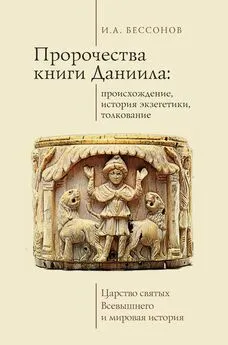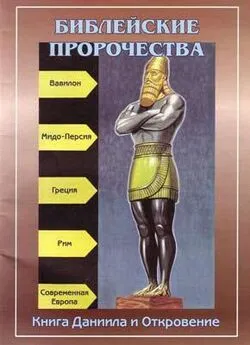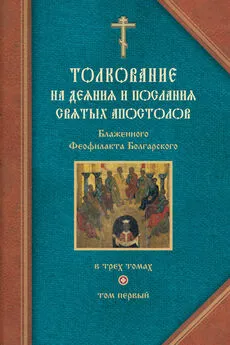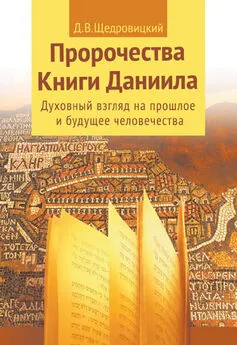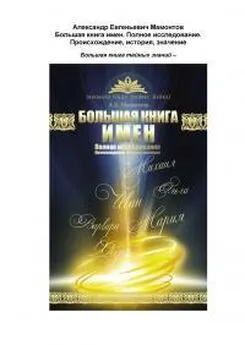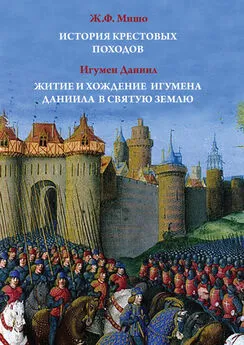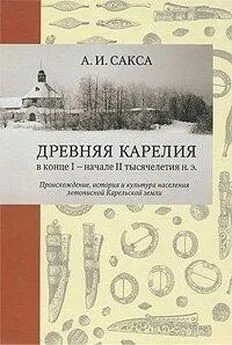Игорь Бессонов - Пророчества книги Даниила: происхождение, история экзегетики, толкование. Царство святых Всевышнего и мировая история
- Название:Пророчества книги Даниила: происхождение, история экзегетики, толкование. Царство святых Всевышнего и мировая история
- Автор:
- Жанр:
- Издательство:неизвестно
- Год:неизвестен
- ISBN:978-5-907189-66-9
- Рейтинг:
- Избранное:Добавить в избранное
-
Отзывы:
-
Ваша оценка:
Игорь Бессонов - Пророчества книги Даниила: происхождение, история экзегетики, толкование. Царство святых Всевышнего и мировая история краткое содержание
Пророчества книги Даниила: происхождение, история экзегетики, толкование. Царство святых Всевышнего и мировая история - читать онлайн бесплатно ознакомительный отрывок
Интервал:
Закладка:
49
Baum Armin D. Revelatory Experience and Pseudoepigraphical Attribution in Early Jewish Apocalypses // Bulletin for Biblical Research 21.1 (201 1). P. 90–91.
50
Charles Robert H. Eschatology: The Doctrine of a Future Life in Israel, Judaism and Christianity. London, 1913; Charles Robert H. The Apocrypha and Pseudepigrapha of the Old Testament. Vol.2. Oxford, 1913.
51
Rowland Cristopher. Op. cit. P. 66–70.
52
Согласно выражению О.Х. Штека «оригинальный смысл текста» (Steck Odil Hannes. Old Testament Exegesis. A Guide to the Methodology. Atlanta, 1998. P. 1–2).
53
Steck Odil Hannes. Op cit. P. 19–20.
54
Bockmuehl M. The Dead Sea Scrolls and the Origins of Biblical Commentary // Text, Thought, and Practice in Qumran and Early Christianity. Leiden, 2009. P. 3.
55
Тексты Кумрана. Вып. 1. М., 1971.
56
Относительно возможности эллинистического влияния на кумранские комментарии см. Pieter B. Hartog. Pesher and Hypomnema: A Comparison ofTwo Commentary Traditions from the Hellenistic-Roman Period. Leiden-Boston, 2017.
57
Machiela Daniel A. The Qumran Pesharim as Biblical Commentaries Historical Context and Lines of Development // Dead Sea Discoveries 19 (2012). P. 313–362; Collins John J. The Apocalyptic Imagination: An Introduction to Jewish Apocalyptic Literature. Michigan-Cambridge, 2016. P. 189.
58
Elliger K. Studien zum Habakkuk-Kommentar vom Toten Meer. Tübingen, 1953. S. 1 18–64; Machiela Daniel A. Op. cit. P. 357; Fishbane Michael. The Qumran Pesher and Traits of Ancient Hermeneutics // Proceedings ofthe World Congress of Jewish Studies. Vol. I. Division A. Jerusalem, 1973. P. 1 14.
59
Stehndahl Krister. The School ofSt. Matthew and Its Use ofthe Old Testament. Uppsala, 1954.
60
Tracy David, McQueen Robert. A Short History of the Interpretation of the Bible. Minneapolis, 1988. P. 66.
61
Священник Тимофеев Борис. Диодор Тарсийский. Предисловие к толкованию на 118-й псалом. // Святоотеческая экзегетика. 2016. № 2. С. 220.
62
Childs Brevard S. ‘The Sensus Literalis’ ofScripture: An Ancient and Modern Problem // Beitrage zur Alttestamentliche Theologie: FS Walter Zimmerli. Göttingen, 1977. P. 89.
63
Fernández F. Andre. Hermenéutica. Rome, 1927. P. 306.
64
Coppens J. Les harmonies des deux Testaments. Tournai-Paris, 1949.
65
Brown Raymond E. The Sensus Plenior ofSacred Scripture. Baltimore, 1955. P. 92.
66
Williamson Peter S. Catholic Principles for Interpreting Scripture. A Study ofthe Pontifical Biblical Commission’s “The Interpretation of the Bible in the Church”. Roma, 2001. P. 206.
67
Reventlow Henning Graf. History of Biblical Interpretation. Volume 1. From the Old Testament to Origen. Atlanta, 2009. P. 30–31.
68
Williamson Peter S. Op. cit. P. 169.
69
Fabiny Tibor. The Literal Sense and the “Sensus Plenior” Revisited // Hermathena. No. 151 (Winter 1991). P. 21.
70
Frye Northrop. The Great Code: The Bible and Literature. New York-London, 1982. P. 220– 221.
71
Добыкин Д.Г. Православное учение о толковании Священного Писания. Лекции по библейской герменевтике. СПб., 2016. С. 147.
72
Fitzmyer Joseph A. Essays on the Semitic Background of the New Testament. Grand Rapids, 1997. P. 56–58.
73
Brown Raymond E. Op. cit. P. 122.
74
Goldingay John. Approaches to Old Testament Interpretation. Toronto, 2002. P. 107–109.
75
Brown Raymond E. The Sensus Plenior in the Last Ten Years // The Catholic Biblical Quaterly. P. Vol. 25. 1963. P. 274; Bergado G.N. The Sensus Plenior as a New Testament Hermeneutical Principle. Master’s Thesis. Trinity Evangelical Divinity School (1969). P. 27; Williamson Peter S. Op. cit. P. 204–205.
76
Обсуждение см. в работе Brown Raymond E. The History and Development of a Theory of Sensus Plenior // The Catholic Biblical Quarterly. Vol. 15, No. 2 (April, 1953). P. 157–158.
77
Girdlestone Robert B. The Grammar of Prophecy: A Systematic Guide to Biblical Prophecy. Grand Rapids, 1955.
78
Mickelsen A. Berkley. Interpreting the Bible. Grand Rapids, 1972.
79
Ramm Bernard. Protestant Biblical Interpretation. A Textbook of Hermeneutics. Micihigan, 1970. P. 241–275.
80
Kaiser Walter C. Back Toward the Future: Hints for Interpreting Biblical Prophecy. Eugene, 2003.
81
Лосев А.Ф. Диалектика мифа. М., 2001. С. 221.
82
Ramm Bernard. Op. cit. P. 249–250.
83
Lamberton Robert. Homer the Theologian. Neoplatonist Allegorical Reading and the Growth of the Epic Tradition. Berkeley-Los Angeles-London, 1989. P. 15.
84
Обзор литературы, рассматривающей подобные параллели, см. в Whitman Jon. Interpretation and Allegory: Antiquity to the Modern Period. Leiden-Boston-Köln, 2000. P. 37.
85
Десницкий А.С. Введение в библейскую экзегетику. М., 201 1. С. 22–25, 106.
86
Hanson Richard Patrick Crosland. Allegory and Event: A Study of the Sources and Significance of Origen’s Interpretation of Scripture. Louisville-London, 2002. P. 84.
87
Op. cit. P. 82.
88
Tracy David, McQueen Robert. A Short History of the Interpretation of the Bible. Minneapolis, 1988. P. 58–59; Нестерова О.Е. Проблемы интерпретации учения Оригена о трех смыслах Священного Писания в современной научной литературе // Раннехристианская и византийская экзегетика. М., 2008. C. 26–67.
89
Young Frances M. Biblical Exegesis and the Formation of Christian Culture. Cambridge, 1997. P. 193.
90
Goppelt Leonhard. Typos: The Typological Interpretation ofthe Old Testament in the New. Grand Rapids, 2002. P. 32–42.
91
Allison Dale. The New Moses: A Matthean Typology. Eugene, 2013.
92
Hanson Richard Patrick Crosland. Op. cit. P. 67.
93
David Tracy, Robert McQueen Grant. Op. cit. P. 92–99.
94
Cohen Gerson D. Esau as Symbol in Early Medieval Thought // Jewish Medieval and Reinessance Studies. Cambridge, 1967; Yuval Israel. Two Nations in Your Womb: Perceptions ofJews and Christians in Late Antiquity and the Middle Ages. Berkeley-Los Angeles-London, 2000. P. 1–30.
95
Parker Brent E. Typology and Allegory: Is There a Distinction? A Brief Examination of Figural Reading // The Southern Baptist Journal of Theology. 21/1 (Spring 2017). P. 62.
96
Beale G.K. Handbook of the New Testament Use of the Old Testament. Exegesis and Interpretation. Michigan, 2012. P. 58.
97
Следует отметить, что подобное соотношение между sensus plenior и типологией наблюдается далеко не всегда, что не позволяет представить sensus plenior как разновидность типологии.
98
Steinmetz David C. The Superiority of Precritical Exegesis // Theology Today 37 (1980). P. 27–38.
99
Sparks Kenton L. God’s Word in Human Words. An Evangelical Appropriation of Critical Biblical Scholarship. Michigan, 2008. P. 386.
100
Начиная с комментария М.Ж. Лагранжа (1883–1938) и в особенности после издания энклитики Пия XII «Divino afflante Spiritu» (1943) с позицией светских ученых начинают соглашаться католические исследователи. Авторы «Православной энциклопедии» подходят к этому вопросу очень осторожно, излагая и традиционную, и критическую точку зрения, не отдавая явного предпочтения ни той, ни другой. Тем не менее, большая часть статьи о книге пророка Даниила посвящена именно изложению взглядов исследователей, придерживающихся историко-критического метода.
101
Достаточно сравнить его с книгой Неемии, где повествование ведется от первого лица, а неправдоподобные и чудесные элементы отсутствуют.
102
Collins John J. A Commentary on the Book ofDaniel. Minneapolis, 1993. P. 31.
103
Иосиф Флавий. Иудейские древности. Т. 1. М., 1996. С. 435.
104
Farrar F.W. The Expositor’s Bible. The Book ofDaniel. London, 1895. P. 299.
105
Rowley H.H. The Unity of the Book ofDaniel // The Servant of the Lord and Other Essays on the Old Testament. Oxford, 1965. P. 249–280.
106
Norman W. Porteous. Daniel: A Commentary. Philadelphia, 1976.
107
Plöger Otto. Das Buch Daniel. Gütersloh, 1973.
108
Lacocque André. The Book of Daniel. London, 1979. P. 10–12.
109
Kratz Reinhard Georg. Translatio imperii: Untersuchungen zu den aramäischen Danielerzählungen und ihrem theologiegeschichtlichen Umfeld. Neukirchen-Vluyn, 1991.
110
Collins John J. P. 38.
111
Grabbe Lester L. A Dan(iel) for all Seasons // The Book ofDaniel. Vo1. 1. Boston-Leiden, 2002. P. 229–246.
112
Kratz Reinhard Georg. Op. cit.
113
Collins John J. Op. cit. P. 169.
114
Meinhold Johannes. Die Composition des Buches Daniel. Inaugural diss. Greiswald: Julius Abel. 1884.
Читать дальшеИнтервал:
Закладка:
